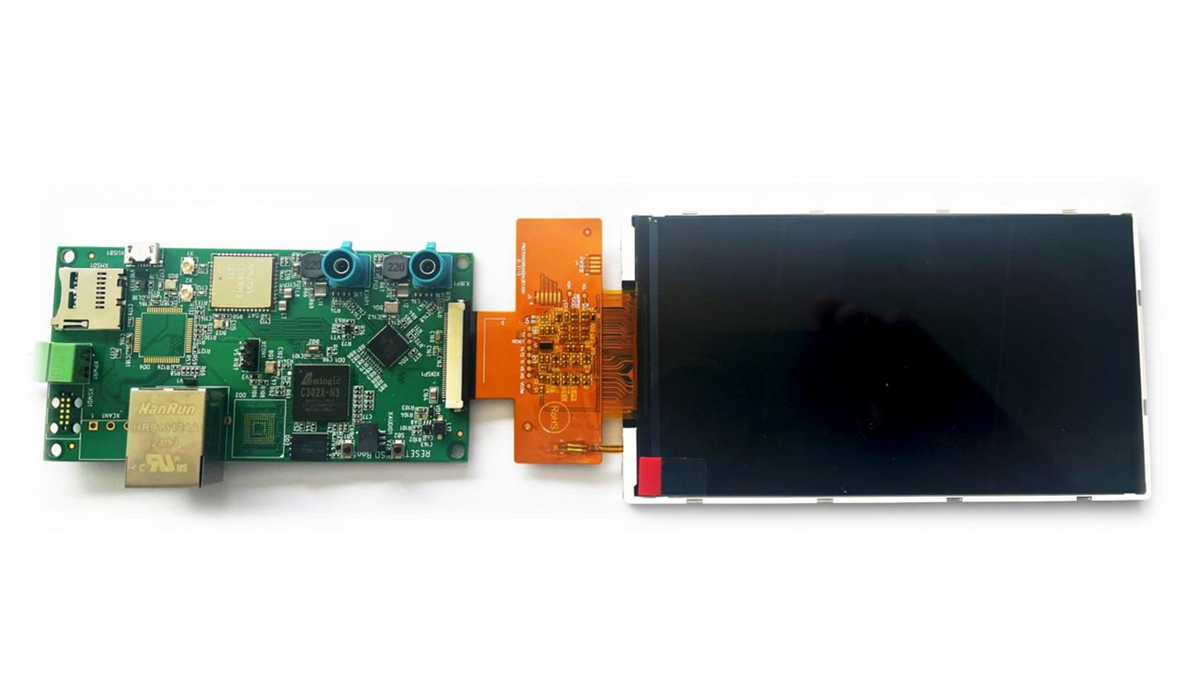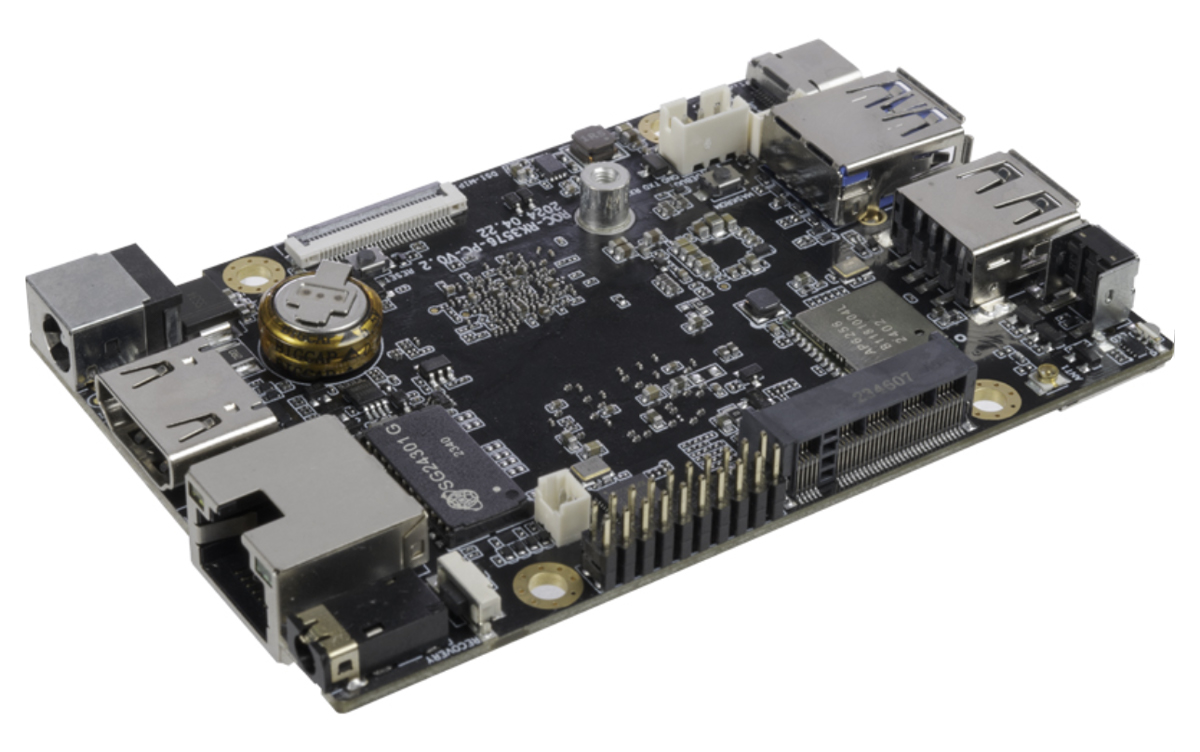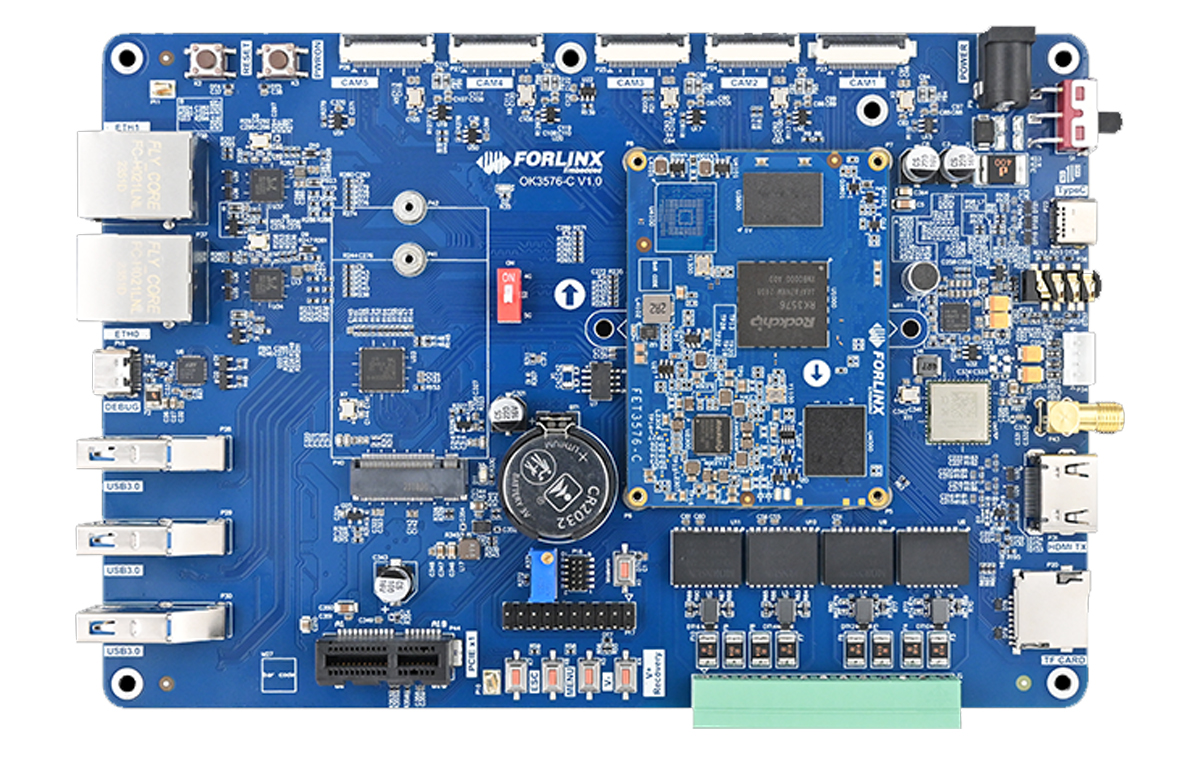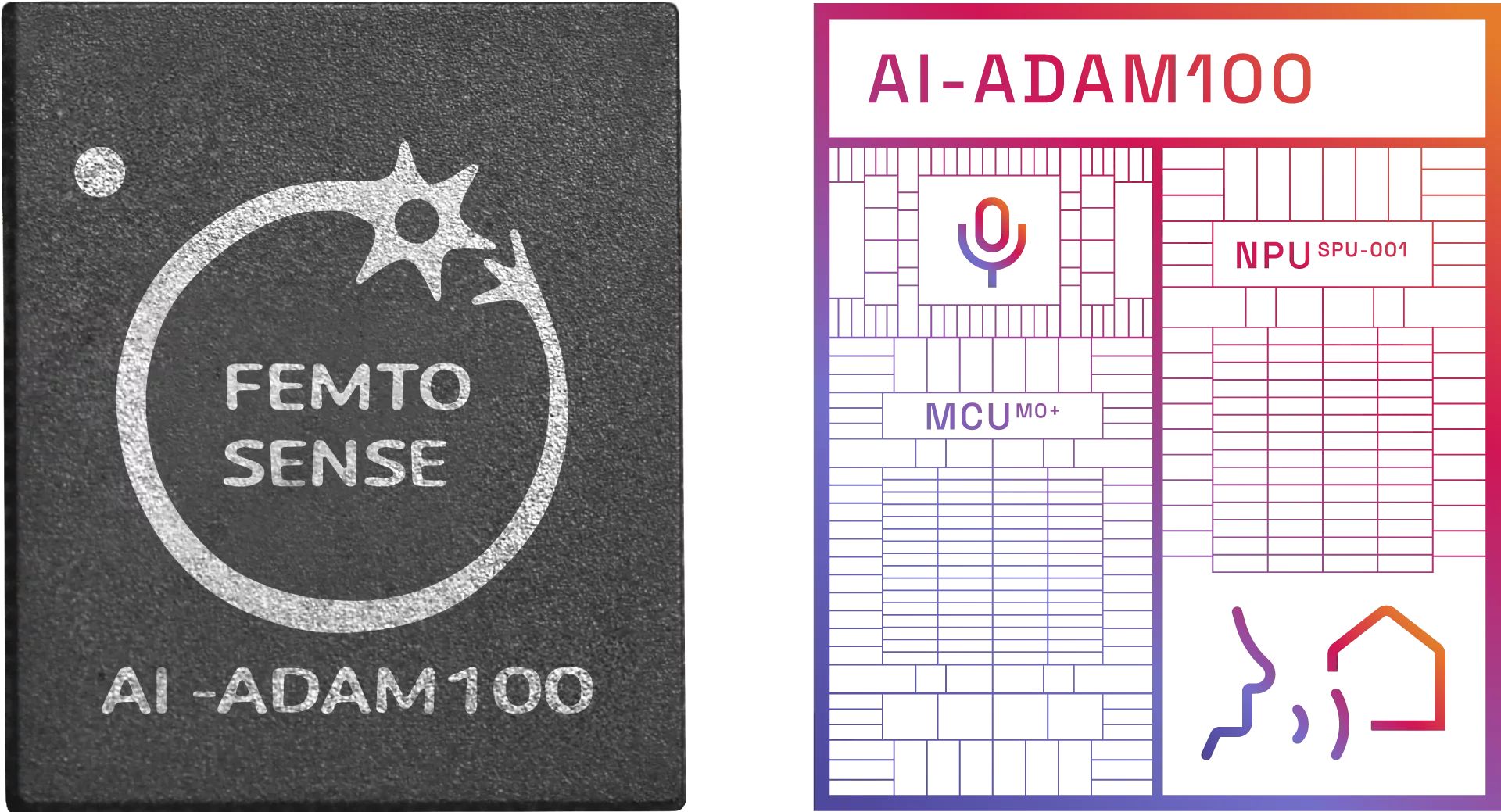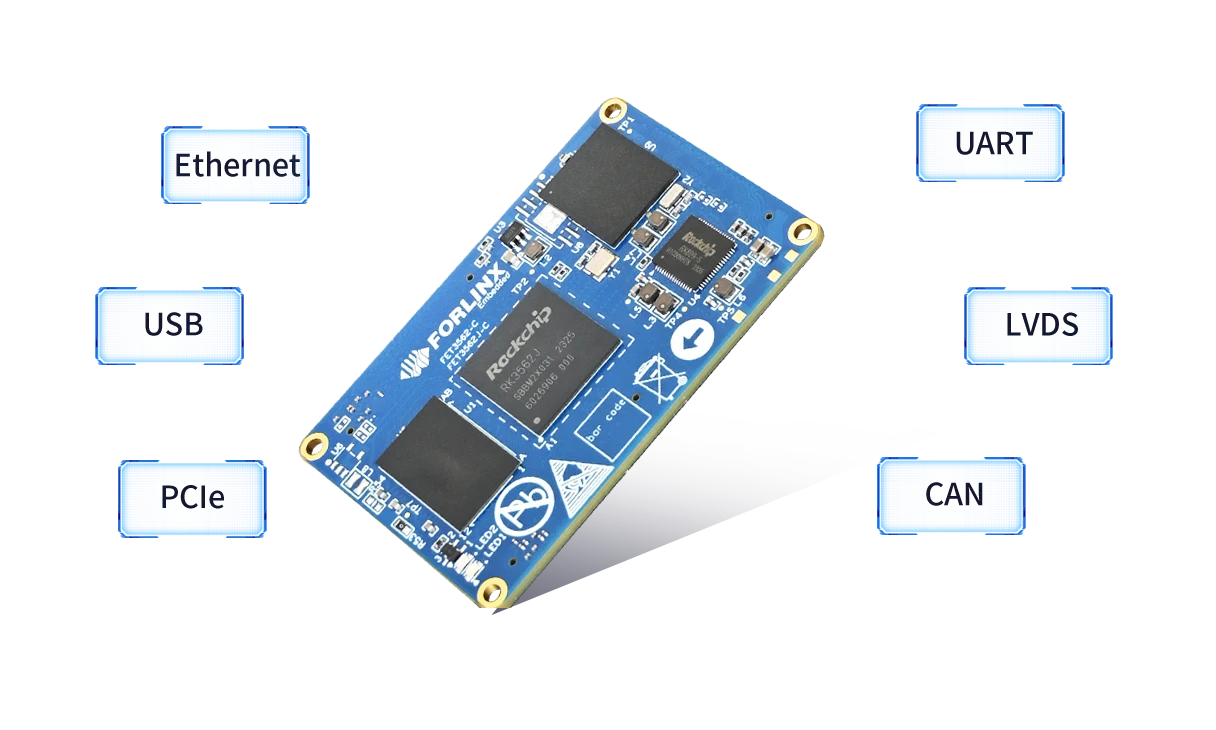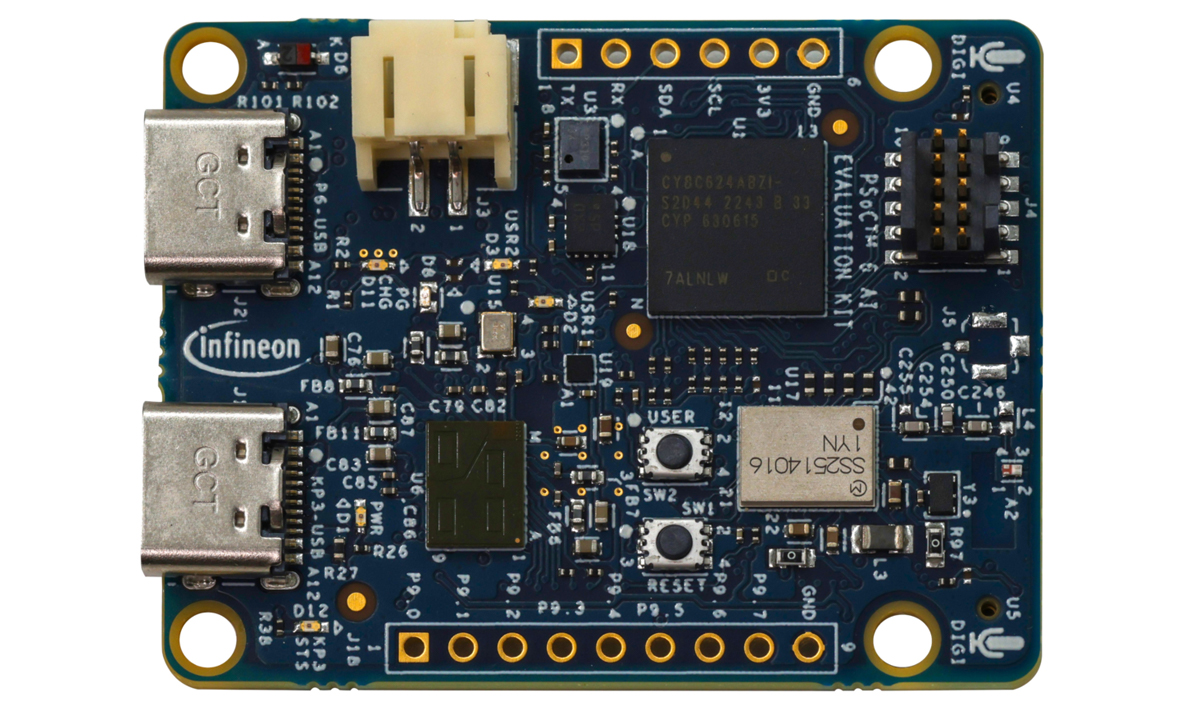Seeed Studio’s reCamera AI camera is a modular RISC-V smart camera system for edge AI applications based on SOPHGO SG2002 SoC. The camera is made up of three boards: the Core board, the Sensor board, and the Baseboard. The Core board includes hosts the processor, storage, and optional Wi-Fi. The Sensor board consists of image choice of image sensors, and the Baseboard provides various connectivity options including USB Type-C, UART, microSD, and optional PoE port and CAN bus connectivity options. At the time of writing the company has released the C1_2002w and C1_2002 core boards. The C1_2002w core board includes eMMC storage, Wi-Fi, and BLE modules, and the C1_2002 features extra SDIO and UART connectivity, but not WiFi. Both boards use the SOPHGO SG2002 tri-core processor and can be paired with various camera sensors for applications such as robotics, healthcare, smart home, as well as buildings and industrial automation. […]
Amlogic C302X embedded AI camera kit features GMSL2 connectors, Ethernet, WiFi, BLE, and CAN Bus interface
The DAB Embedded CAMKIT-AML302-IMX462, is a compact AI camera kit built around the Amlogic C302X processor with 256MB DDR3 on-chip (SiP) and designed for image processing and machine learning applications. The board also includes GMSL2 interfaces that add support for a range of Sony camera sensors, including global shutter and 3D options. Additionally, it has 100Mbit LAN, Wi-Fi, BLE, and CAN bus connectivity which makes this board useful for various computer vision applications. Previously we have written about similar camera kits including the Pivistation 5, the OpenCV AI Kit Lite, the e-con Systems 360° Camera Kit, and much more Feel free to check those out if you are interested in the topic. DAB Embedded CAMKIT-AML302-IMX462 specifications Processor – Amlogic C302X CPU – Dual Core ARM Cortex-A35 2 TOPS Neural Processing Unit (NPU) OpenCV (Hardware Accelerator) Video Encoder – H.264/H.265/JPEG ISP – High-performance, up to 5MP with HDR System Memory – 256MB […]
The Open Home Foundation adds HACS, microWakeWord, and Music Assistant open-source projects
HACS, microWakeWord, and Music Assistant projects have joined the Open Home Foundation launched a few months ago to manage open-source projects related to Home Assistant and Smart Home applications in general separating them from Nabu Casa’s commercial activities. Note the HACS, microWakeWord, and Music Assistant projects will not operate directly under the Open Home Foundation’s umbrella, but they are external projects that the foundation collaborates on since it believes those are projects worth investing in to further develop the Smart Home ecosystem. Let’s have a quick look at the three projects. Home Assistant Community Store (HACS) is the most used custom integration for Home Assistant and allows users to easily install custom integrations, cards, and themes. Music Assistant gives users control over their media players and audio files handling both local music collection and music streaming services so that users can play any tune anywhere in their house without restrictions. […]
Firefly ROC-RK3576-PC low-profile Rockchip RK3576 SBC supports AI models like Gemma-2B, LlaMa2-7B, ChatGLM3-6B
Firefly ROC-RK3576-PC is a low-power, low-profile SBC built around the Rockchip RK3576 octa-core Cortex-A72/A53 SoC which we also find in the Forlinx FET3576-C, the Banana Pi BPI-M5, and Mekotronics R57 Mini PC. In terms of power and performance, this SoC falls in between the Rockchip RK3588 and RK3399 SoCs and can be used for AIoT applications thanks to its 6 TOPS NPU. Termed “mini computer” by Firefly this SBC supports up to 8GB LPDDR4/LPDDR4X memory and 256GB of eMMC storage. Additionally, it offers Gigabit Ethernet, WiFi 5, and Bluetooth 5.0 for connectivity. An M.2 2242 PCIe/SATA socket and microSD card can be used for storage, and the board also offers HDMI and MIPI DSI display interfaces, two MIPI CSI camera interfaces, a few USB ports, and a 40-pin GPIO header. Firefly ROC-RK3576-PC specifications SoC – Rockchip RK3576 CPU 4x Cortex-A72 cores at 2.2GHz, four Cortex-A53 cores at 1.8GHz Arm Cortex-M0 MCU at 400MHz GPU […]
Forlinx FET3576-C Rockchip RK3576 SoM powers feature-rich OK3576-C board for AIoT applications
Forlinx FET3576-C SoM is a new System-on-Module built around the Rockchip RK3576 SoC which features four Arm Cortex-A72 and four Cortex-A53 cores made from a 22nm lithography process. The SoM is available with 2GB or 4GB of LPDDR4 RAM option and can be equipped with up to 32GB of eMMC storage. Additionally, it has 6 TOPS NPU power and supports standard peripherals like GbE Ethernet, Wifi, Bluetooth, LVDS, MIPI DSI, and much more. All these features make this device useful for IoT, edge computing, digital signage, and many other applications. The new FET3576-C SoM and its OK3576-C development board look very similar to the Forlinx FET3562J-C SoM and related board we covered earlier this month. But the main difference between the two is that the new one is built with the RK3576 SoC whereas the old one is built around the Rockchip RK3562(J) SoC. Previously we also saw that the […]
Femtosense introduces the AI-ADAM-100 system-in-package for affordable, efficient AI-based voice processing on the edge
Femtosense’s newest release, the AI-ADAM-100, combines a low-power Arm Cortex M0+ microcontroller from ABOV Semiconductor with the Femtosense Sparse Processing Unit (SPU), an in-house neural processing unit. This combination powers AI voice processing and cleanup capabilities on edge devices. It leverages sparsity techniques to ensure that models can run on edge devices without intensive processing. Sparsity in AI refers to the presence of zeroes or non-zero values in the matrices and tensors used in machine learning models. No computation is required for these zero weights, heavily reducing processing requirements. The Femtosense AI-ADAM-100 aims to bring voice control to various devices such as home appliances, hearing aids, industrial headsets, and consumer earbuds. These appliances can implement voice user interfaces that allow users to talk naturally in their own words. On-device voice cleanup functionality would reduce infrastructure costs and improve the accuracy of the data sent to the cloud. The Femtosense SiP […]
Forlinx FET3562J-C SoM features Rockchip RK3562(J) SoC with 1 TOPS NPU, dual Ethernet, camera, display interfaces
The Forlinx FET3562J-C is a Rockchip RK3562/RK3562J powered System-on-Module (SoM) built with a 22nm process and features four high-performance ARM Cortex-A53 cores running at up to 2GHz. It also can support up to 2GB LPDDR4 RAM and can be configured with up to 16GB eMMC storage. Additionally, it has 1 TOPS NPU and standard peripherals like Ethernet, Wifi, Bluetooth, LVDS, MIPI DSI, and much more. All these features make this SoM useful for IoT, automation, and consumer electronic applications. Previously, we have seen Forlinx launch similar SoM with development boards such as the Forlinx RZ/G2L, the FET-MX9352-C, the OK335xS-II and much more feel free to check those out if you are interested in the topic. Forlinx FET3562J-C SoM and carrier board specifications SoM Specifications SoC (one or the other) Rockchip RK3562J – ARM Cortex-A53 quad-core @ 1.8GHz Rockchip RK3562 ARM Cortex-A53 quad-core @ 2.0 GHz NPU – 1 TOPS INT8 […]
Infineon CY8CKIT-062S2-AI PSoC 6 Edge AI evaluation kit features multiple sensors, Arduino headers, Pmod connectors
Infineon CY8CKIT-062S2-AI evaluation kit is a hardware platform built around the PSoC 6 family of MCUs and designed to help developers easily create and test edge AI applications. The dev board features an array of sensors including radar, microphone, magnetometer, IMU, and an air pressure sensor, which make it easy for data collection applications. The board also features Wi-Fi and Bluetooth connectivity and includes an additional expansion header that can be used to connect other modules and sensors. All of these features make this board useful for building a wide range of AI-powered applications, including smart home automation, industrial monitoring, wearables, healthcare devices, and robotics. Previously we have written about similar low-power edge AI modules such as the Digi ConnectCore MP25, the Axiomtek AIE110-XNX, and the Arducam KingKong feel free to check those out if you are interested in such low-power modules. Infineon CY8CKIT-062S2-AI Evaluation Kit specifications: MCU – Infineon […]



